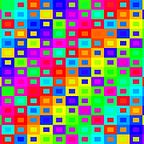History is Generative
Designing with precedent
Like a material or system that is dynamic, history itself is generative. It is active with properties that shape and transform concepts. By using historical objects, or moments in history, these concepts reach back and move forward at once, like hitching a ride.
Louis XV died in 1774. This same year, the trace element manganese is discovered. What emerges when these two histories collide?
The fauteuil chair and the super-crystal structure of manganese rebuild a moment in history.
The Grotto: a dual obsession with boulders and eighteenth-century romantic landscapes. How to replicate this artificial cave, to siphon all the lost enchantments of the era trapped in this picturesque landscape device, is a historical and technical challenge. Can Victorian romanticism exist in modular boulders?
Or if a project is not an actual moment in history, maybe it is about certain inspiring figures. Wilson “Snowflake” Bentley: a farmer from Vermont and pioneer in “photomicrography” who proved with a simple homemade camera that no two snowflakes are alike. Bentley photographed over six thousand specimens across his lifetime, standing in the cold, patiently waiting for snowflakes to fall. He died of pneumonia for this crusade.
An ode to Bentley, who once asked, “What Magic is there in the rule of six that makes the snowflake conform so rigidly to it laws?” His story is a contemporary one. It is about the search for an underlying cause for why matter forms in all its particular ways.
Dating back to the ninth century, the Subak is a collective water management system that shapes Bali’s landscape of rice paddies. The Subak organizes and nurtures. It breaks the hillside down into terraces, which can be irrigated and cultivated individually, but also connects to form a larger network or ecology of fields. An art foundation sited within this unique terrain is organized similarly. The units, which extend from the existing agricultural landscape, seamlessly connect art gardens and exhibition spaces into a continuous interior and exterior circuit.
A new building lives in the past. Take, for example, Miami’s historic architecture defined by the Art Deco movement from the 1920s to the 1940s. Bold geometric motifs shape the city’s landmarks. But with a textured, pleated, concrete ripple, the city’s era of decadence and ornament, is imagined with an alternate rhythm and control.
The ruins of a theater are revived under the shelter of a new canopy in Gabon, West Africa. The canopy emerges from a single element: an extruded aluminum and local hardwood panel. Each panel interlocks with another in a reciprocal pattern — producing a thin self-supporting structure and skin in which column and roof emerge from the same language. Over the remains of an old theater, a new one is created.
In a traditional Balinese house, each room is a separate and distinct building. In a Chinese courtyard house, each room is arranged symmetrically around a courtyard creating a connected rooftop. How might a single-family house synthesize these two domestic vernaculars? The Bali House organizes independent buildings under a continuous roof.
Note:
This article is an excerpt from our book Trace Elements by Columbia Books on Architecture and the City.
